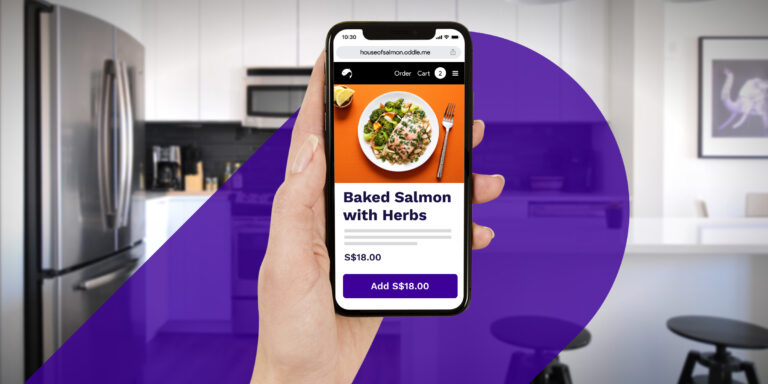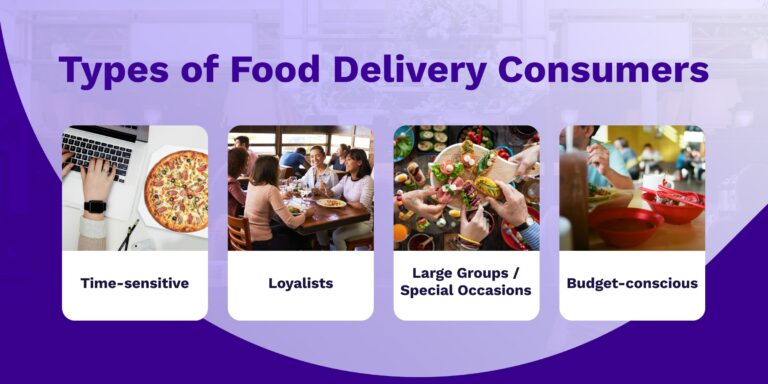Understanding the Different Types of Food Delivery Customers
Keep your customers coming back with targeted marketing strategies
The ultimate goal of most F&B businesses is to maximise profits, and crafting a restaurant sales strategy is the first step. Besides factors like price and quality, a comprehensive sales strategy should include targeted marketing efforts. This requires a deep understanding of your restaurant’s diners, including their demographic information, spending habits, and meal preferences.
Using data for customer segmentation
Identifying the different types of customers in restaurants can be easily done through data. Your restaurant’s many digital solutions, from payment terminals to reservation systems, offer up a wealth of data that allow you to determine the average spend per table, best-selling items, and dine-in peak periods.
In this article, however, we’ll be focusing specifically on the common profiles of food delivery consumers, relying on industry insights and data distilled from Oddle’s e-Shop platform.
Through Oddle’s merchant dashboard, F&B businesses are also easily able to view analytics like traffic source (how visitors discover your e-Shop), average basket size of orders, sort customers by last purchase date, and more.
Time-sensitive Customers
As the name implies, time-sensitive consumers are most concerned about getting their meals promptly and efficiently. These customers are often busy working adults or students, and favour on-demand delivery apps like Deliveroo and foodpanda. Their average order value also tends to be low, as they’re either eating alone or in small groups.
Marketing Tips
If you own a physical outlet and this segment is already your brand’s main audience (e.g. salad bars, takeaway food counters), you’ll want to further appeal to their desire for convenience by widely advertising your delivery services both in-store and via social media channels. This potentially leads to higher sales as your existing customers can continue ordering from you even on days that they don’t visit your store physically. At the same time, you’re generating new customer acquisition by reaching out to diners who are not within the vicinity and have never visited.
For brands who want to hit this segment but are more known for dine-in services (e.g. full-service restaurants, casual dining chains), having lunch specials and set meals are helpful when attracting time-sensitive customers. To speed up prep time, you could offer fixed-portion bento sets, and even encourage higher order values by bundling your bentos with drinks and/or dessert. Your marketing collaterals should also emphasise the fuss-free nature of your lunch gatherings, and float the promise of quick deliveries (as long as it is within your ability to do so!).
Brand Loyalists
Loyalists are your brand’s best customers—they have a strong connection to your brand and consistently make orders from your e-Shop. Due to their preference for your products, they are often more price-flexible than other segments, prioritising quality and service instead. On Oddle’s merchant dashboard, you can identify this customer segment by using the ‘sort’ tool to view customers with high lifetime order values.
Marketing Tips
In exchange for their loyal support of your brand, most of these customers expect a certain level of service and quality to be maintained. You can demonstrate your gratitude for their continued business with exclusive rewards, early access to promotions, or even through personalised email campaigns.
By making them feel valued, you are fostering a connection that will keep them coming back. It is vital not to overlook this segment of customers, as the strongest loyalists are often your best advocates. These diners are highly likely to recommend your business to those in their network, helping you spread brand awareness through word-of-mouth.
Large Groups / Special Occasions
When it comes to food delivery, an order for 5 or more is often considered a large group delivery. There are many overlaps between large group orders and those who only place orders for special occasions, as the latter is generally celebrated or attended by a crowd.
In both cases, diners tend to opt for restaurants with sharing plates, large platters, or catering services. As there are diverse tastes within a group, customisability and menu range are crucial decision factors.
Find out if this segment comprises a large portion of your current audience by determining the average basket size of your delivery orders, as well as how often such large orders are made.
Marketing Tips
If large groups often order from your brand, consider offering even more bundle options for variety. You can either offer bundles in different sizes (for 6 pax, 8 pax, and 10 pax), or offer different ‘tiers’ of bundles. A basic bundle for 6 might only comprise main dishes, for example, while a more premium bundle for 6 might include appetisers and desserts.
You could also make your large group menu more customisable, as people often have dietary restrictions (vegetarian, gluten-free) etc.
As many people want their special occasions to be memorable, they often opt for meal options that can be presented aesthetically. This might mean serving your premium roasts on a wooden carving board for delivery, or including table decorations in your meal package. These thoughtful details will make your brand stand out, and you should emphasise these unique points in your marketing campaigns.
To increase the potential of successful checkouts, give diners an extra ‘push’ with free delivery promos or dollar discounts once they cross a certain order amount.
Budget-conscious Customers
Consumers in this segment prioritise cost-efficiency and affordability, and are often willing to sacrifice other factors like quality and service for monetary savings. This also includes delivery fees—the lower, the better.
Marketing Tips
As competing on price is a slippery slope, consider focusing your brand’s marketing efforts on the value-for-money aspect of your products. Your meal combo might not be the cheapest on the market, but it could possibly offer the greatest value for money if it comprises more variety or more meal items than your competitors.
To encourage higher basket checkouts, you could also offer percentage discounts past a certain order value.
As budget-conscious consumers are especially sensitive to price changes, it is best to be upfront and transparent on your pricing models. Customers might gain a negative image of your brand if you tout a “value meal for $10++”, and the total instead comes up to $13 or more. Market your dishes with an upfront nett pricing instead, to build your reputation with consumers as a wallet-friendly, trustworthy brand.
Want to learn more about marketing for restaurants? Have a look at the 5 Digital Marketing Strategies all F&B Businesses Should Know, or read about How to Use Data Analytics for Restaurant Sales instead.



